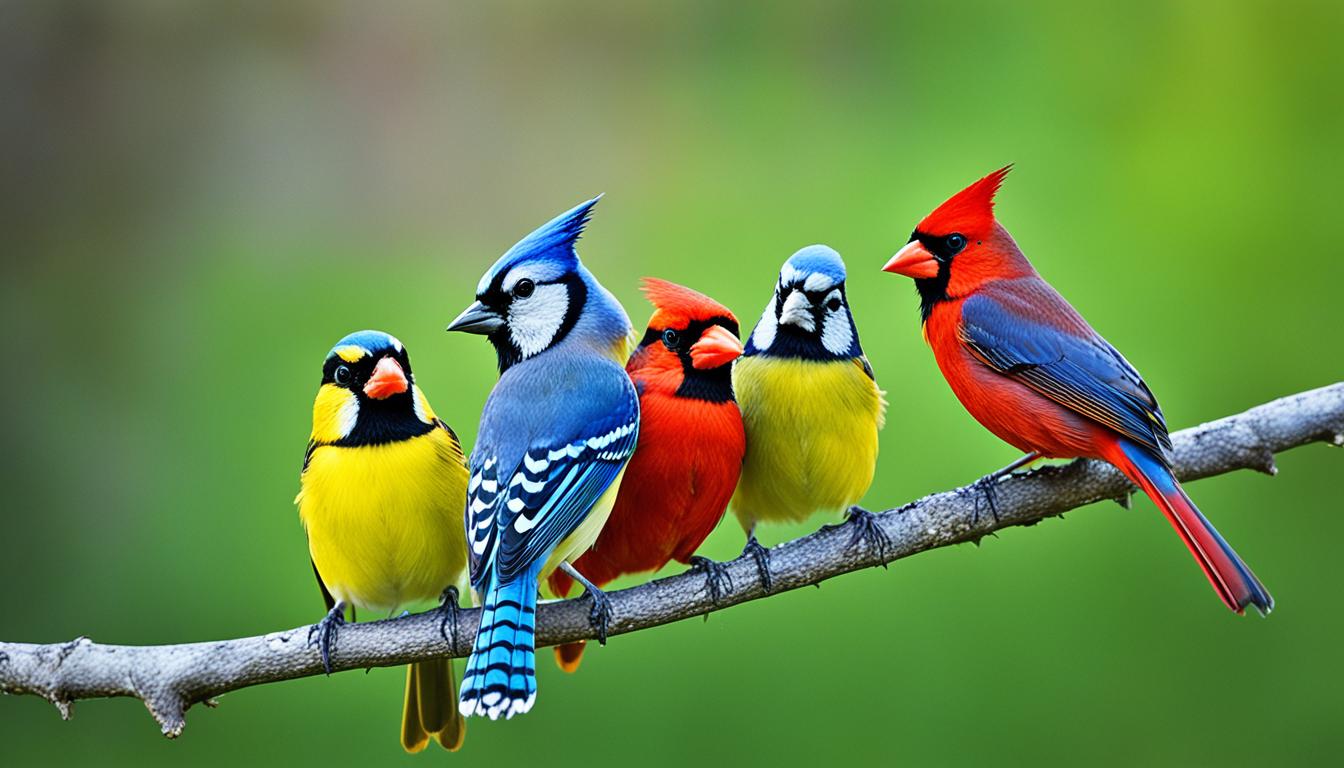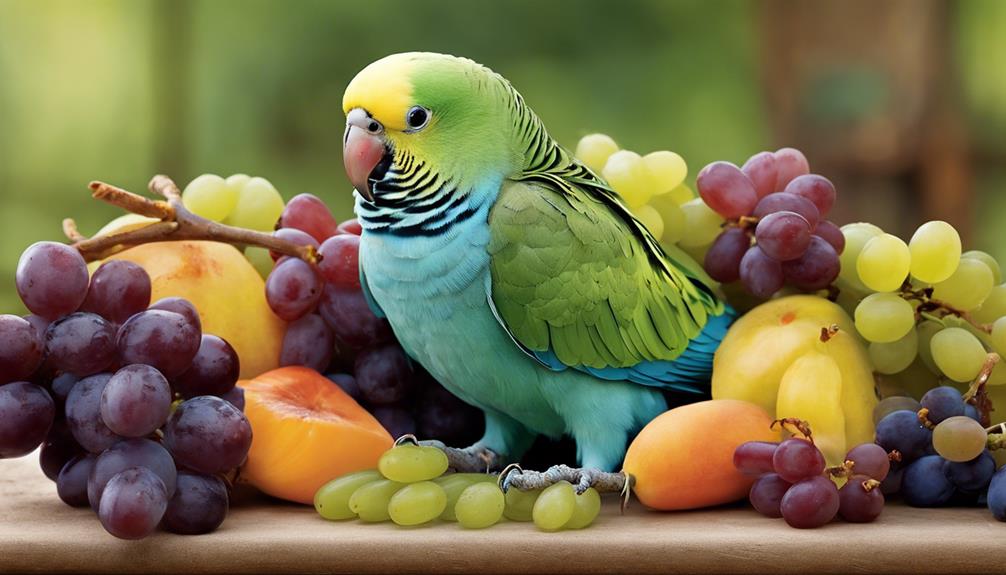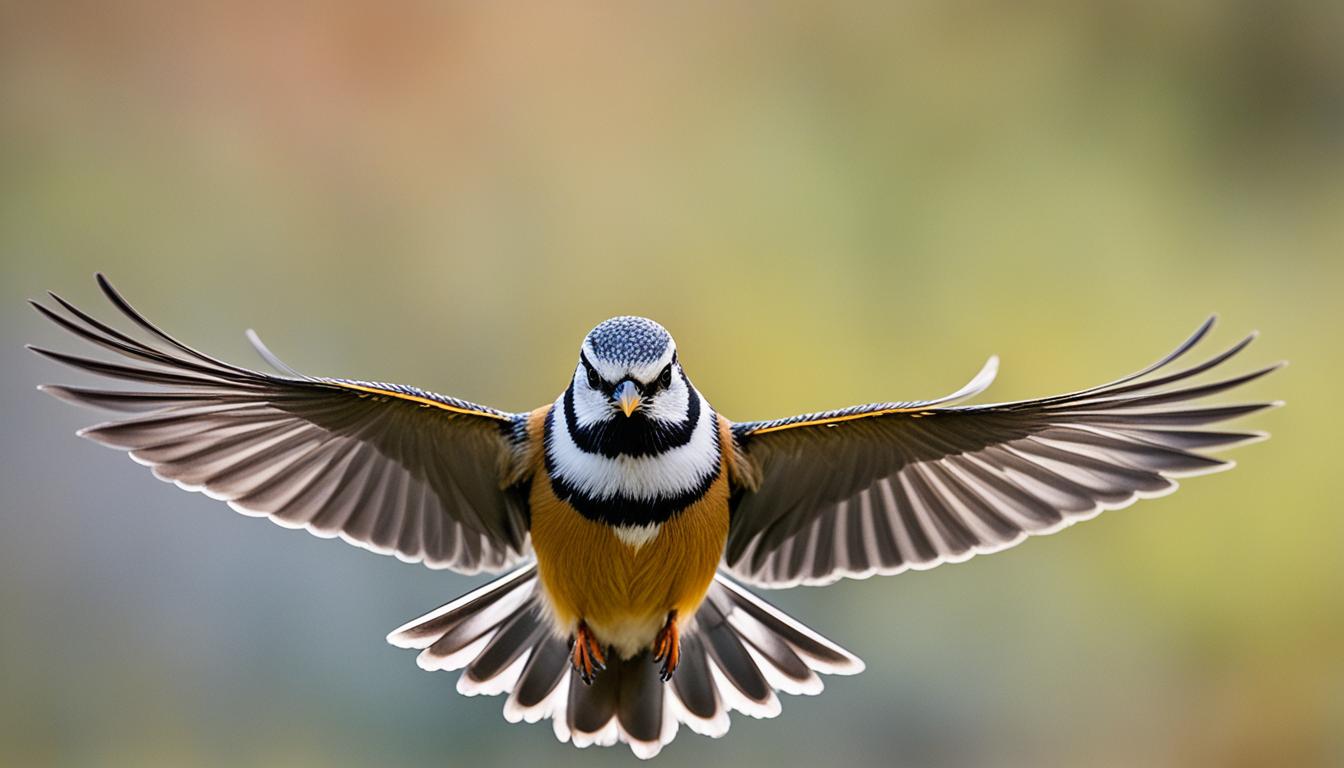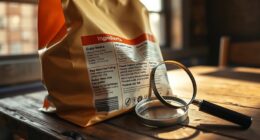Did you know that Texas has the second-highest official bird list in the United States? With a remarkable 664 species recorded, the Lone Star State is a mecca for birdwatching enthusiasts and nature lovers. From the vibrant Northern Cardinals to the majestic soaring hawks, Texas offers an incredible birdwatching adventure like no other. Join us as we explore the common birds that grace the skies of Texas, from your own backyard to the vast wilderness.
Key Takeaways:
- Texas boasts the second-highest official bird list in the United States, with 664 recorded species.
- From vibrant Northern Cardinals to soaring hawks, Texas offers a diverse range of common bird species.
- Birdwatching in Texas provides endless opportunities to observe and appreciate the fascinating avian diversity.
- By attracting these common birds to your backyard feeders, you can experience the joy of observing birds up close.
- Embark on a birdwatching adventure in Texas and be amazed by the beauty and variety of its feathered inhabitants.
Most Common Birds of Texas
According to breeding bird surveys and eBird data, the following birds are the most common in Texas. These birds can often be found in backyards as well as in wild areas throughout the state. From the colorful Northern Cardinal to the melodious Mockingbird, these birds are a delight to observe and attract to your feeders. Whether you’re a seasoned birder or just starting out, these common birds are a great introduction to birdwatching in Texas.
| Bird | Scientific Name | Habitat | Food |
|---|---|---|---|
| Northern Cardinal | Cardinalis cardinalis | Woodlands, gardens, urban areas | Seeds, insects |
| Mockingbird | Mimus polyglottos | Various habitats | Insects, berries |
| Mourning Dove | Zenaida macroura | Open areas, urban and rural | Seeds, grains |
| White-winged Dove | Zenaida asiatica | Gardens, urban areas, farmlands | Seeds, grains |
| Carolina Chickadee | Poecile carolinensis | Woodlands, parks, urban areas | Insects, seeds |
| American Crow | Corvus brachyrhynchos | Various habitats | Varied diet, opportunistic omnivore |
| House Sparrow | Passer domesticus | Urban and suburban areas | Grains |
| House Finch | Haemorhous mexicanus | Various habitats | Seeds |
These are just a few of the most common birds you can encounter in Texas. Keep an eye out for their vibrant plumage and listen for their distinctive songs. By welcoming them into your backyard with feeders and suitable habitat, you can create a haven for these wild birds while enjoying the wonders of birdwatching in the Lone Star State.
Northern Cardinal
The Northern Cardinal is the most common bird in Texas. With its vibrant red plumage, distinctive crest, and melodious song, it is a favorite among birdwatchers. The male Northern Cardinal is known for its bright red color, while the female is more muted. These birds can be found in a variety of habitats, including woodlands, gardens, and even urban areas. They are a frequent visitor to bird feeders and often forage on the ground for seeds and insects.
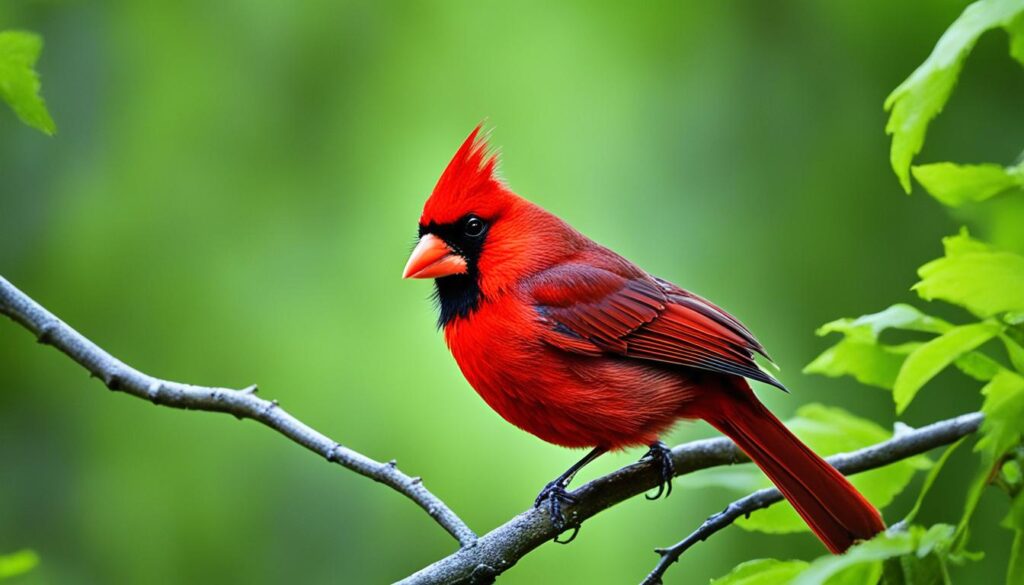
| Northern Cardinal | |
|---|---|
| Scientific Name: | Cardinalis cardinalis |
| State Bird of: | Texas |
| Features: | Vibrant red plumage, distinctive crest |
| Habitat: | Woodlands, gardens, urban areas |
| Feeding: | Bird feeders, ground forager |
Northern Mockingbird
The Northern Mockingbird, also known as the state bird of Texas, is a fascinating species found throughout the state. With its medium-sized gray body and distinctive mimicking abilities, this bird is a common sight in various habitats, from woodlands to urban areas. The Northern Mockingbird is known for its remarkable ability to mimic the calls of other birds and even replicate sounds in its environment, such as car alarms and cell phone ringtones.
This talented bird feeds on insects and berries and builds cup nests in bushes and low trees. Its adaptability allows it to thrive in diverse landscapes, making it a beloved part of Texas’ avian community. Now, let’s take a closer look at the Northern Mockingbird’s incredible mimicking abilities and its significance as the state bird of Texas.
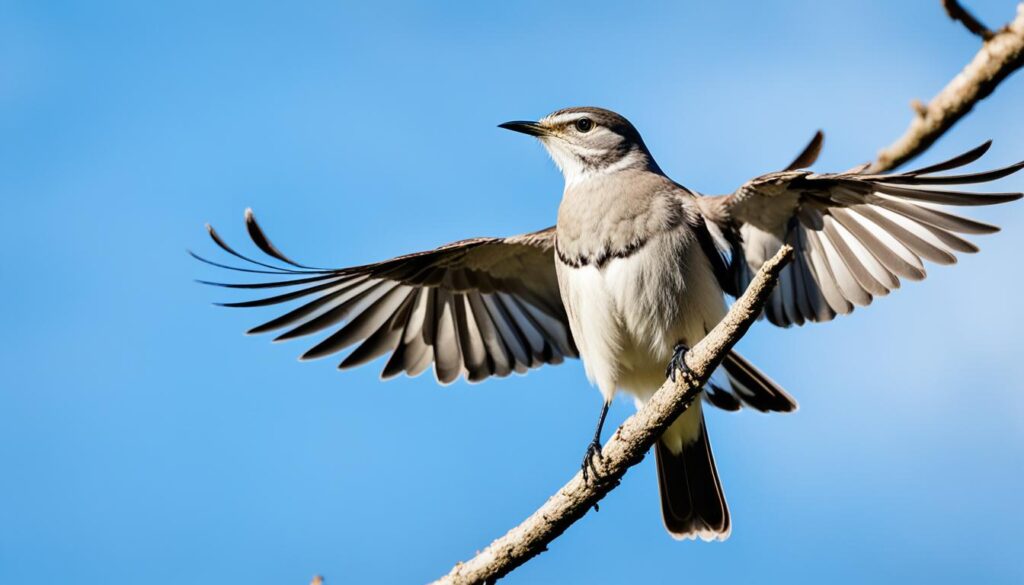
Mimicking Abilities of the Northern Mockingbird
The Northern Mockingbird’s exceptional mimicking abilities have earned it a reputation as one of the most talented vocalists in the bird kingdom. This gray bird can imitate the songs and calls of other bird species with astonishing accuracy. Whether it’s the melodic tune of a warbler or the rhythmic chirping of a sparrow, the Northern Mockingbird can replicate a wide range of sounds.
Not only does this bird mimic other birds, but it can also mimic non-bird sounds like sirens, alarms, and even human voices. Its ability to mimic these various sounds adds a unique and entertaining element to the Texas birdwatching experience.
State Bird of Texas
In 1927, the Northern Mockingbird was designated as the official state bird of Texas. Its selection as the state bird was influenced by its prevalence throughout the state and its versatile vocal talents. The Northern Mockingbird showcases the diversity and beauty of Texas’ birdlife, making it a fitting representative for the state.
This honor highlights the significance of the Northern Mockingbird as an iconic symbol of Texas. Its gray plumage and captivating melodies have made it a beloved and recognizable bird in the Lone Star State.
| Characteristics | Description |
|---|---|
| Size | Medium-sized |
| Coloration | Gray plumage |
| Habitat | Woodlands, gardens, urban areas |
| Feeding | Insects and berries |
| Nesting | Cup nests in bushes and low trees |
The table above provides a summary of the key characteristics of the Northern Mockingbird.
The Northern Mockingbird’s ability to mimic other birds and sounds makes it a true musical virtuoso of the avian world. Its captivating performances bring joy to birdwatchers and underscore the incredible diversity of wildlife found in Texas.
Mourning Dove
The Mourning Dove is a medium-sized dove that is commonly seen in Texas. With its plain brown and gray plumage, long tail, and soft cooing sound, it is a familiar sight in both urban and rural areas. These doves primarily feed on seeds and grains and can often be found at bird feeders or foraging on the ground in open areas. They build small, messy nests of sticks in trees and are widespread throughout the United States, including Texas.
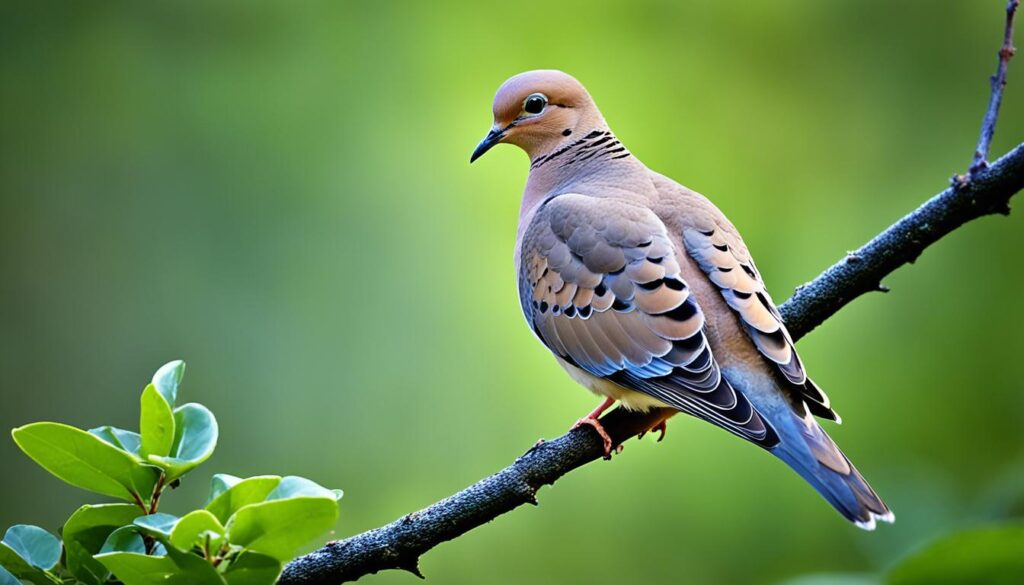
Characteristics of the Mourning Dove:
- Size: Medium-sized dove
- Plumage: Plain brown and gray
- Sound: Soft cooing sound
- Feeding Habits: Primarily seeds and grains
- Nesting: Builds small, messy nests of sticks in trees
“The Mourning Dove is a peaceful presence with its gentle cooing and subtle colors.”
The Mourning Dove is known for its calming presence and soothing cooing sound that can be heard throughout Texas. Its muted plumage blends well with its surroundings, allowing it to camouflage effectively. These doves are often seen perched on telephone wires or foraging on the ground in search of food. Their preference for seeds and grains makes them common visitors to bird feeders in both residential and natural areas.
The Mourning Dove’s breeding season can extend throughout the year in Texas due to its favorable climate. They are monogamous birds and form strong pair bonds. The female typically lays two eggs in a small, fragile nest made of sticks. The male and female take turns incubating the eggs and caring for the hatchlings.
Throughout the United States, including Texas, the Mourning Dove is protected by regulations that limit hunting and ensure the conservation of this species. Its gentle presence and soft cooing sound make it a cherished bird in both rural and urban areas.
White-winged Dove
The White-winged Dove is a sandy brownish-colored dove with a distinctive white patch in each wing. It has a rectangular tail and can be found in a variety of habitats, including gardens, urban areas, and farmlands. These doves primarily feed on seeds and grains, which they pick up from the ground. They often forage in groups and can form large flocks. The White-winged Dove is a common and easily seen bird in Texas.
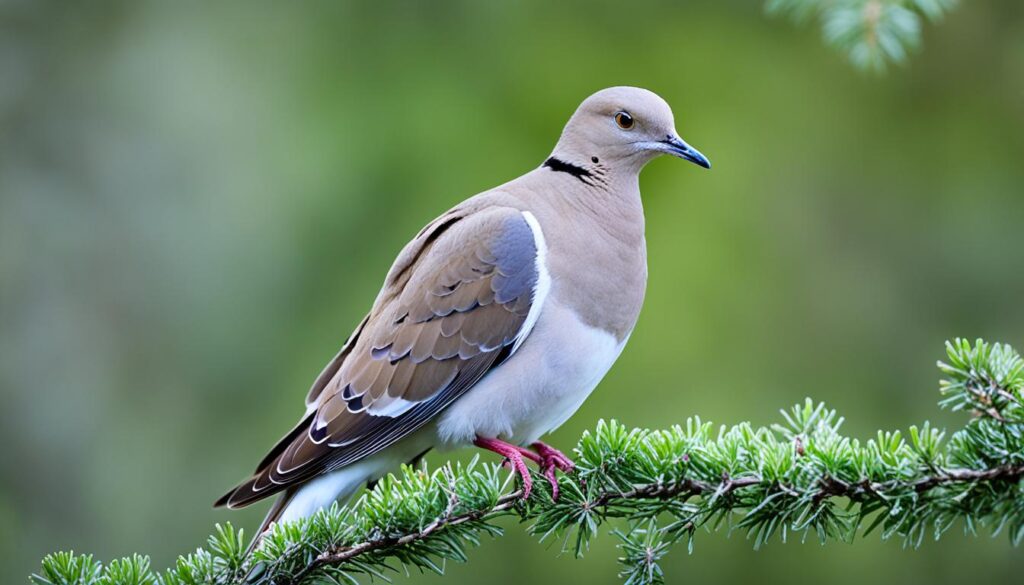
| Species | White-winged Dove |
|---|---|
| Plumage | Sandy brownish |
| Distinctive Feature | White patch in wings |
| Foraging Behavior | Ground forager |
| Habitat | Gardens, urban areas, farmlands |
| Diet | Seeds and grains |
Carolina Chickadee
The Carolina Chickadee is a small songbird with gray and buff-colored plumage. It has a distinctive black cap, white face, and small conical beak.
These birds primarily feed on insects and seeds, making them valuable contributors to pest control and plant propagation. Carolina Chickadees are regular visitors to bird feeders, delighting birdwatchers with their acrobatic feeding behaviors.
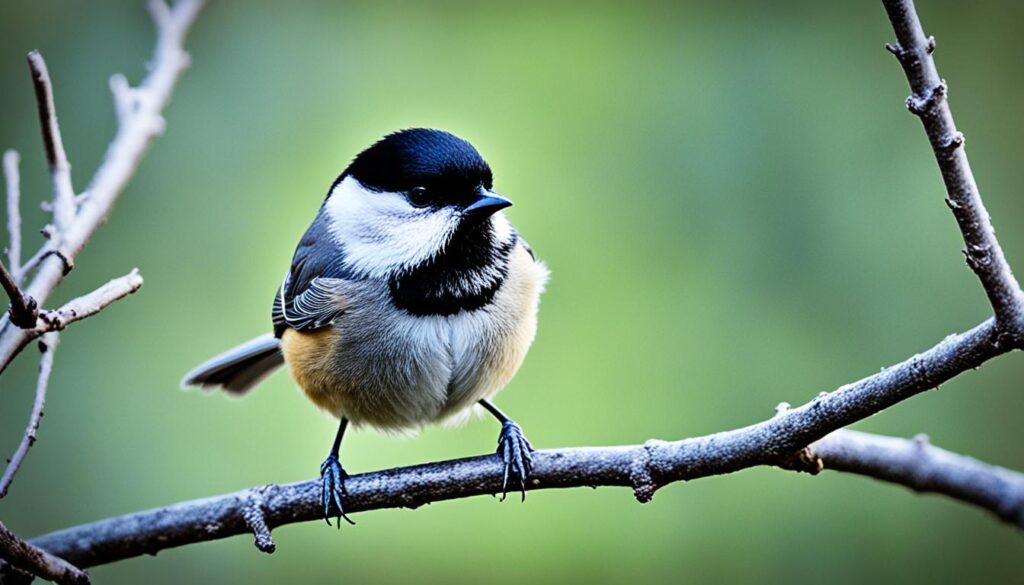
Carolina Chickadees can be found in a variety of habitats, including woodlands, parks, and urban areas. They are adaptable and can easily coexist with human populations.
These small songbirds are known for their cheerful calls, including a clear “see-dee, see-dew” song. Their sweet melodies add a touch of beauty to any natural setting.
Carolina Chickadee Facts:
| Common Name | Carolina Chickadee |
|---|---|
| Scientific Name | Poecile carolinensis |
| Size | Approximately 4.5 inches (11 cm) in length |
| Habitat | Woodlands, parks, and urban areas |
| Diet | Insects and seeds |
| Range | Eastern and southeastern United States |
With their small size and charming appearance, Carolina Chickadees are a favorite among bird enthusiasts. Their presence adds joy and liveliness to any outdoor space.
American Crow
The American Crow is a fascinating bird that can be found throughout various habitats in Texas. With its striking all-black plumage and impressive size, this large black bird is a notable presence in the avian world. Crows are known for their adaptability, thriving in woodlands, fields, urban areas, and even landfills. Their ability to thrive in diverse environments is a testament to their resilience and resourcefulness.
One of the remarkable aspects of the American Crow is its intelligent behavior. These birds have demonstrated problem-solving skills and have been observed using tools to obtain food. Additionally, crows display a remarkable ability to recognize and remember human faces, which is a testament to their cognitive abilities.
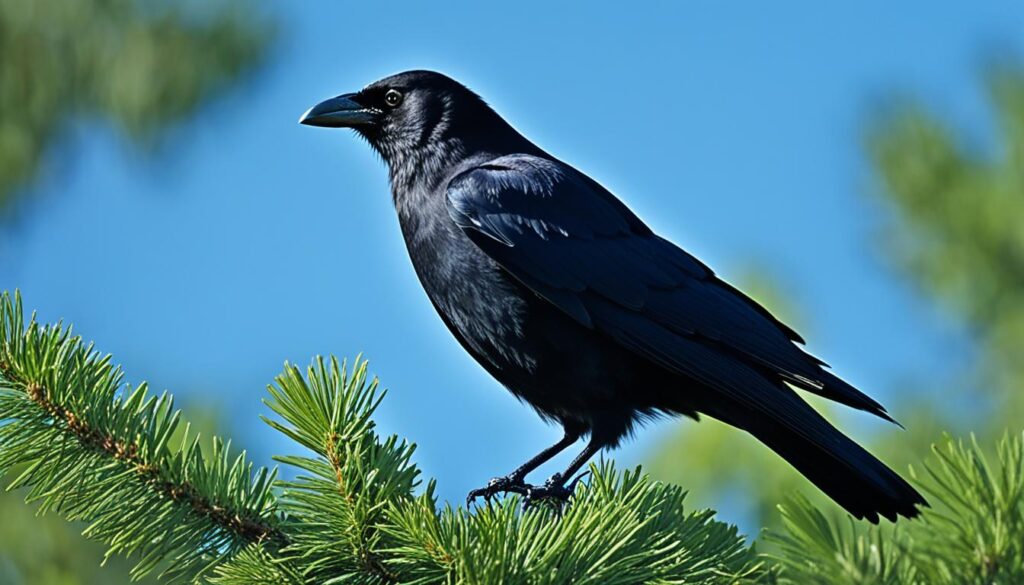
The American Crow showcases a diverse diet, making them opportunistically omnivorous. They feed on a wide range of food sources, including carrion, small mammals, insects, fruits, seeds, and even human-provided scraps. This adaptability contributes to their widespread distribution and successful survival.
The following table provides more insights into the characteristics of the American Crow:
| Characteristics | Description |
|---|---|
| Size | Approximately 17-21 inches in length |
| Weight | 10-20 ounces |
| Habitat | Woodlands, fields, urban areas, and landfills |
| Diet | Varied and opportunistic omnivores |
| Behavior | Highly intelligent, adaptive, and social |
The adaptability and intelligent behavior of the American Crow make it a captivating species to observe and study. Whether in forests, urban parks, or even your own backyard, these birds leave a lasting impression with their distinct calls and striking appearance.
House Sparrow
The House Sparrow is an invasive species originally from the Middle East. It has become one of the most abundant and widespread birds in Texas and is commonly seen in urban and suburban areas. House Sparrows often compete with native birds for nest cavities and are known for their adaptability to human environments. They primarily feed on grains and are often seen eating bread and popcorn at parks and other public areas.
Key Points:
- The House Sparrow is an invasive species that has become abundant in Texas.
- It is commonly found in urban and suburban areas.
- House Sparrows compete with native birds for nest cavities.
- They are adaptable to human environments.
- Their diet consists primarily of grains.
- They can often be seen eating bread and popcorn at parks and other public areas.

By understanding the presence and behavior of the House Sparrow, we can better appreciate the impact of invasive species on our ecosystem. Its prevalence serves as a reminder of the delicate balance between native and non-native species, and the importance of preserving the natural habitats of our native bird species.
House Finch
The House Finch is a small bird with rosy red plumage on its head and upper breast. It is a common backyard bird in Texas, frequently seen in urban areas, woodlands, and parks. House Finches are known for their vibrant colors and delightful presence.
“The House Finch adds a touch of beauty to any backyard. Its rosy red feathers bring a pop of color and liveliness to the surroundings.”
As a common backyard bird, the House Finch is often attracted to bird feeders with its preference for seeds. They can often be seen enjoying sunflower seeds and millet, adding a charming spectacle to your backyard birdwatching experiences.
Not only are House Finches visually striking, but they also contribute to the acoustic richness of your outdoor space. Their pleasant songs fill the air with melodies that captivate our appreciation for nature.
About the House Finch
Here are some key characteristics of the House Finch:
| Size | Color | Preferred Diet | Habitat |
|---|---|---|---|
| Small | Rosy red plumage on head and upper breast | Seed eater | Backyards, urban areas, woodlands, and parks |
With its charming appearance and lively presence, the House Finch is a beloved bird species that brings joy to birdwatchers and nature enthusiasts alike.
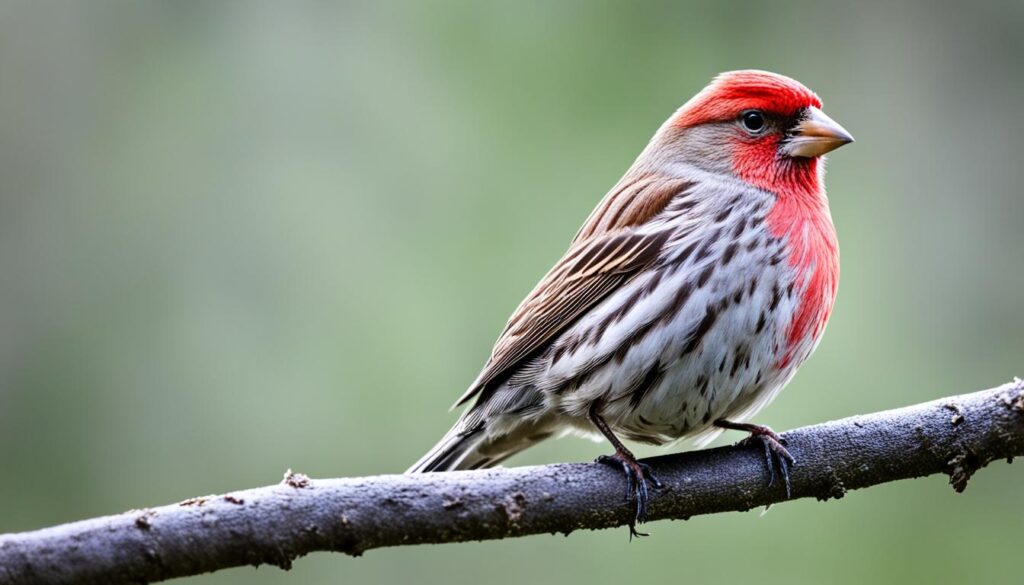
Conclusion
Texas is a birdwatcher’s paradise, offering a wide variety of common bird species to observe and enjoy. Whether you’re a seasoned birder or just starting out, the Lone Star State provides ample opportunities for birdwatching adventures. From the vibrant Northern Cardinal to the melodious Mockingbird, these Texas bird species can be found in a range of habitats throughout the state, including woodlands, gardens, and urban areas.
By setting up bird feeders in your backyard, you can attract these common birds and get a closer look at the fascinating avian diversity that Texas has to offer. Birdwatching in Texas is not only a rewarding pastime but also an educational one, allowing you to learn more about these feathered creatures and their behaviors.
Whether you’re interested in backyard birding or exploring the vast wilderness areas of Texas, you’ll find plenty of opportunities to connect with nature and observe the beauty of Texas bird species. So grab your binoculars, head outdoors, and embark on a birdwatching adventure in the Lone Star State. Happy birdwatching!
FAQ
What are some common birds in Texas?
Where can I find these common birds in Texas?
What is the state bird of Texas?
What kind of food do these common birds eat?
Are these common birds easily identifiable?
Can I attract these common birds to my backyard feeders?
Are there any unique behaviors or traits associated with these common birds?
Can I spot these common birds in urban areas?
Are There Any Exotic Birds from Georgia That Can Be Found in Texas?
Yes, there are several exotic bird breeders in Georgia that offer a variety of beautiful birds that can be found in Texas. Whether you’re looking for parrots, lovebirds, or cockatiels, these breeders have a wide selection of exotic birds for sale.
